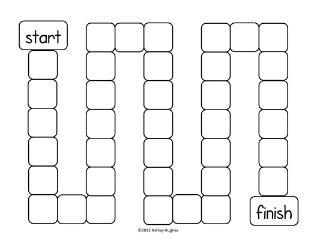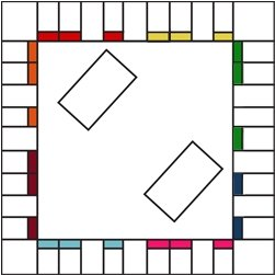At Razum, we enjoy taking the learning through play approach that allows children to remain fully engaged and focused throughout the process of developing essential skills. Last term, we were learning about multiplication, division, and money. Here are some fun ideas to improve these areas while playing at home.
Board Game Bingo, 2 player game
The aim of the game is to get 5 in a row.
Resources needed:
2 x pieces of paper
1 x pencil
25 x Singapore coins
1 x dice
2 x Bingo dabbers or 2 coloured pens
Instructions:
Both players draw a 5x5 table.
The first player puts the Singapore coins (in any order) on the first grid. Make sure all of the spaces on the table are filled.
The second player writes down the value of each coin on the second table so it matches the value of each coin on the first table.
The first player rolls the dice then crosses out one value on the second table, as shown on the key below. For example, if you roll a 1, cross out the 5¢ on the board.
The second player repeats step 4.
The first player to cross 5 in a row wins.

Think Tank:
Do you think it is better to go first or second?
Can you find some good ways to try to win the game?
My Money Line, 2-4 player game
The aim of the game is to collect $1 worth of coins.

Resources needed:
Singapore coins
Purse or bag to put the coins in
Pencil and paper
Instructions:
Each player takes turns to pick a coin out of the purse.
Each time you take a coin, add up the total value of all the coins you have collected.
The first player to reach $1 is the winner.
Challenges and adaptations:
Take out any $1 coins.
Change the winning total to a higher value than $1.
Use notes instead of coins. You can draw these if you don’t have a play-set at home.
Equal Bead Bracelets and Necklaces
Resources needed:

Different coloured beads
String or pipe cleaner
Scissors
Instructions:
Practise threading the beads onto the string.
Organise the beads by colour on the string into equal groups. For example, 5 green beads, 5 blue beads, 5 pink beads, and 5 yellow beads.
Complete the sentences:
_____ groups of _____ beads.
_____ x _____ = _____
Multiplication Flowers

Resources needed:
Paper
Pencils
Objects such as cubes(to help with working out)
Instructions:
Trace around a circular object to make the center of the flower. Label it a number between 1-9. This shows the number of groups.
Draw 12 small petals around the center. I suggest first drawing one on the top, bottom, left and right of the center. Then add two between each of the petals you have just drawn. Label each petal from 1-12. This shows the number of objects in each group.
Draw longer petals above each small petal. This tells you the total number of objects in each group. Use your cubes (or other objects) to help you work out the total.

Challenges and adaptations:
Make a multiplication flower for numbers 0-10.
Increase the number of groups but drawing more than 12 small petals.
Practise your times table without looking at the flower.
Multiplication Madness, 1-4 player game
The aim of the game is to get the most cards.

Resources needed:
Pack of playing cards
Pencil and paper
Instructions:
All players flip two cards up.
Multiply the two cards together.
Whoever has the highest number keeps all of the cards.
When there are no more cards to flip up, the person with the highest number of cards wins.
Challenges and adaptations:
Put a time limit to see if you can complete the game before the timer runs out.
Each player chooses two cards for another player.
Problem of the Day
Head to White Rose Maths to get the problem of the day. These are provided for children across ages 5 to 12. See if you can complete one, or all of them! Ask for support from an adult if you need it.
Problem of the day: https://whiterosemaths.com/resources/classroom-resources/problems/
Multiplication or Money Board Games
Make your own multiplication or money board game! Here are some pictures of board game frame ideas to get you started.
Recommended maths websites:
Education Endowment Foundation (EEF) www.educationendowmentfoundation.org.uk The EEF has a fantastic breadth of maths information and resources for both teachers and parents alike.
White Rose Maths www.whiterosemaths.com Great for home learning resources, such as activities and worksheets.
Mathletics www.mathletics.com Supports maths learning through interactive activities, games and challenges.
NRICH www.nrich.maths.org This website provides many different hands-on activities for children to engage with at home.
The National Centre for Excellence in the Teaching of Mathematics www.ncetm.org.uk While the NCETM is aimed at teachers and teaching assistants, they have a lot of information that parents may find useful to support their understanding of mastering maths and how to support their child’s learning in the area.
Find more ideas for interactive fun home activities here.
Find out more about Razum International School by booking a tour here.
#funmath #funmathgames #mathgames #lovemath #learnandplay #homelearning #homelearningfun #homelearningideas






